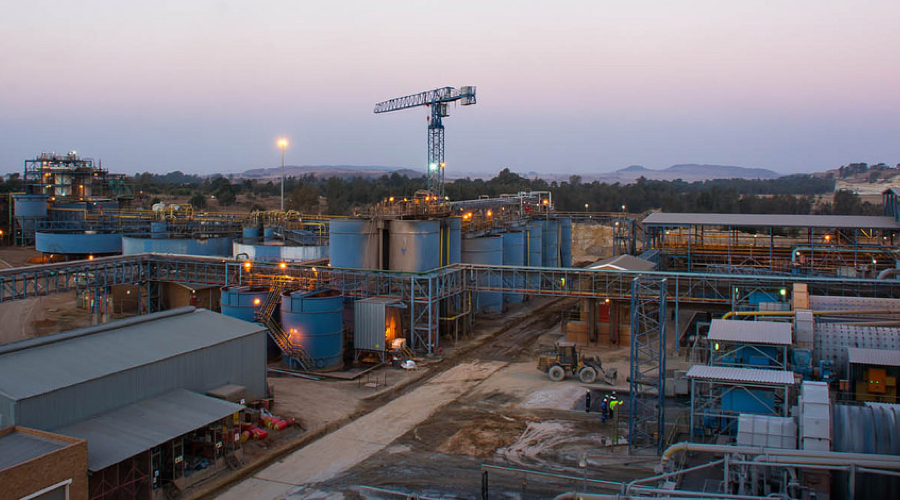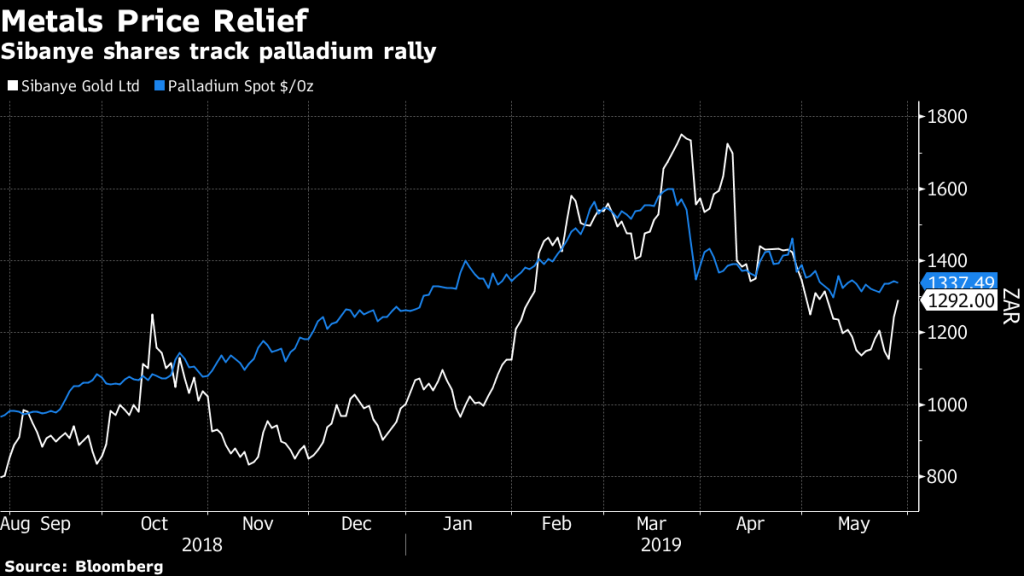
Six years after being carved out of a handful of unwanted gold operations, Sibanye Gold Ltd. has become the world’s biggest platinum miner.
Building on operations spun out of Gold Fields Ltd., Sibanye became the No. 1 miner in South Africa’s waning gold industry. Now, with the acquisition of Lonmin Plc, Chief Executive Officer Neal Froneman has completed Sibanye’s transformation to a giant of the nation’s key platinum sector.
The deal, approved by shareholders on Tuesday, creates a company that will eclipse Anglo American Platinum Ltd. as the world’s biggest platinum miner and will rank second to Russia’s MMC Norilsk Nickel PJSC for palladium output. Moreover, the Lonmin assets may be worth triple what Froneman paid for them, according to Africa’s largest bank.
“This makes Sibanye an integrated platinum producer at a bargain price,” said Bernard Swanepoel, a former chief of Harmony Gold Mining Co. who now sits on the board of Impala Platinum Holdings Ltd.
Sibanye shares were 5% higher as of 4:07 p.m. in Johannesburg, after climbing 10% on Tuesday. Lonmin was up 8.3% in London.
The Lonmin deal also gives Sibanye political clout in South Africa’s mining industry, employing more than 90,000 workers and owning metal processing facilities for the first time. That heft could be important as platinum miners start negotiations with labor unions on a three-year wage agreement.

Still, Froneman faces some tough decisions. Before the acquisition was completed, Lonmin said 12,600 jobs were at risk, with moves already under way to cut 4,100 positions. Sibanye will review all those operations, and the CEO said the company may even consider expanding output.
“This is a culmination of a long-term strategy,” Froneman said in an interview on Tuesday before the result of the Lonmin shareholder vote was announced. “It positions us in the PGMs sector where we believe in the long term future.”
The Lonmin deal could add about $150 million to Sibanye’s annual cash flow, according to Morgan Stanley analysts. Froneman will need that money to start paying down the company’s debt, which piled up during a string of acquisitions that extended Sibanye’s platinum-group metals empire from South Africa to Zimbabwe and the U.S.
Some analysts hope the CEO will take a timeout from his deal-making.
“They got Lonmin very cheaply, it’s a fantastic deal but unfortunately they’ve got a massive debt,” said Rene Hochreiter, an analyst at Noah Capital Markets Ltd. “I hope they stop with acquisitions and concentrate on generating returns, but I don’t think so.”
Should market conditions allow, there are five projects Sibanye is committed to under the terms of the antitrust approval granted for the Lonmin deal. Froneman said it’s too early to say how much the company would invest.
“We don’t want to create a capital overhang in the market,” he said.
While the deal looks good value, bigger isn’t necessarily better, according to Peter Major, a mining analyst at Cape Town-based Mergence Corporate Solutions. Lonmin returned to profit in the six months through March as metal prices rebounded and the rand weakened, but risks remain.
“Do you want to buy the biggest producer, or the richest, or the one that pays the biggest dividend?” Major said. “The Lonmin acquisition could possibly break the company if PGM prices tank and or the rand really strengthens.”